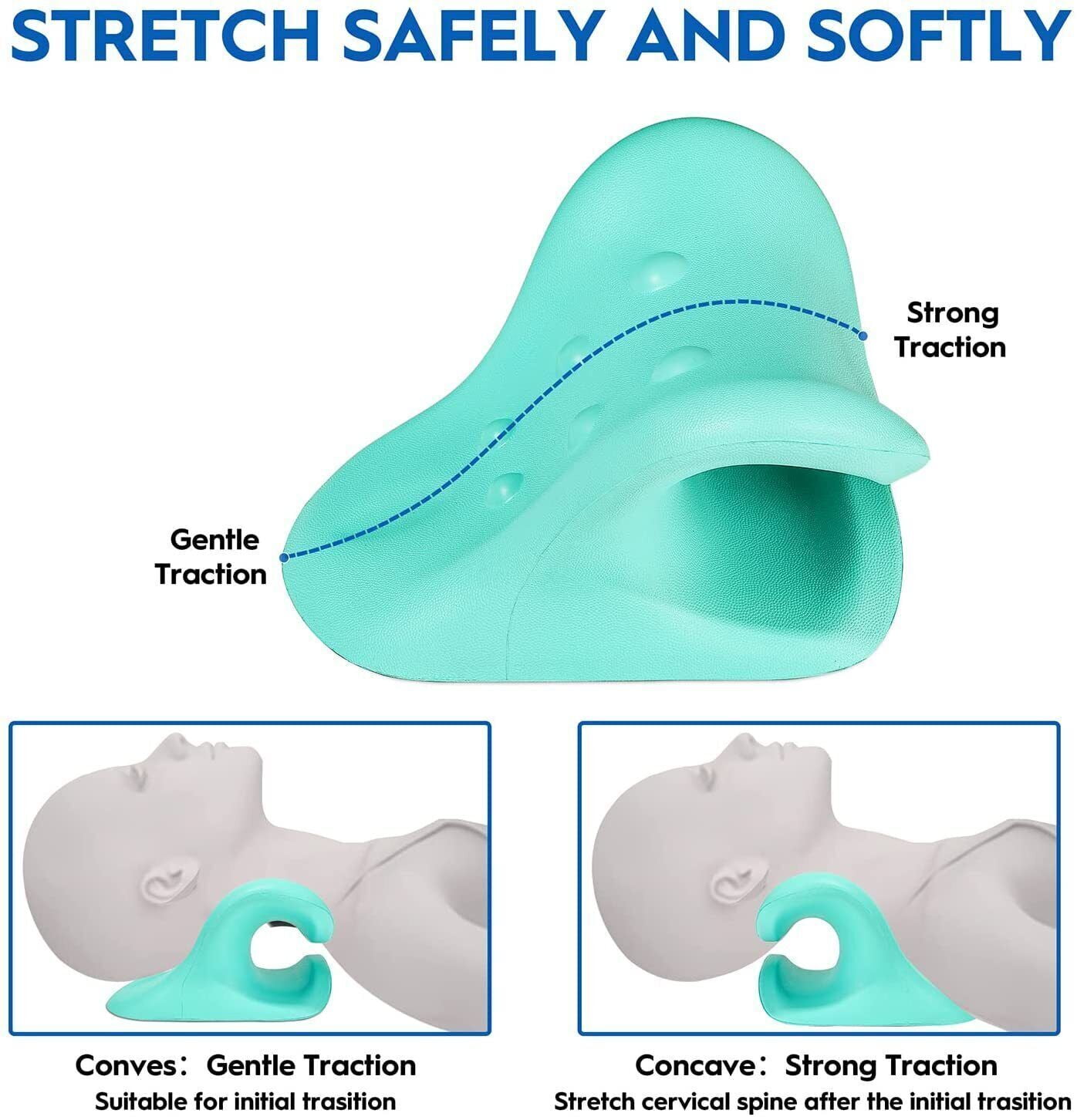Get Long Lasting Relief with the Neck Cloud: The Ultimate Neck Support
Get Long Lasting Relief with the Neck Cloud: The Ultimate Neck Support
Blog Article
Neck Discomfort in the Work Environment: Identifying Risk Variables and Executing Ergonomic Solutions
Neck discomfort in the office is a prevalent issue that can affect worker wellness and productivity. By comprehending the various risk elements adding to neck discomfort and implementing ergonomic remedies, organizations can produce a more conducive work atmosphere.
Common Reasons of Neck Discomfort
Neck discomfort in the work environment is a widespread issue that can be associated to several common reasons. In addition, recurring movements such as regular bending, turning, or getting to can additionally contribute to neck discomfort over time.

Ergonomic Threat Elements
Poor comfort designs in the office can significantly add to neck discomfort among employees. Variables such as inappropriate desk height, poor chair support, and unpleasant positioning of computer system screens can all play a role in the growth of neck discomfort. When staff members are required to sit for prolonged periods ready that stress their neck muscular tissues, it can cause tightness, discomfort, and a lot more significant bone and joint problems with time.
In addition, inadequate ergonomic methods can lead to workers taking on uncomfortable positions while working, such as craning their necks to see a computer system screen or getting to annoyingly for a computer mouse or key-board. neck cloud. These abnormal settings and repeated motions can put unnecessary stress on the neck and bordering muscular tissues, leading to pain and reduced efficiency

Workdesk Configuration Recommendations
When establishing up a desk in the work environment, it is vital to take notice of the ergonomics of the setting. To decrease the danger of neck pain and discomfort, there are numerous desk arrangement suggestions that workers ought to think about. First of all, make sure that the computer monitor is placed at eye level to avoid straining the neck by seeking out or down. The key-board and mouse ought to be put at an elevation where the joints are curved at a 90-degree angle to promote proper wrist placement. Furthermore, the chair elevation must permit the feet to relax level on the flooring with thighs parallel to the ground.
It is also essential to have appropriate lights to decrease eye stress, as scrunching up your eyes or leaning ahead can bring about neck stress. Organize the desk design to keep frequently utilized items within arm's reach, limiting the need for repetitive twisting or reaching movements. By executing article these desk configuration suggestions, workers can create an extra ergonomic workspace that supports neck wellness and lowers the danger of developing occupational neck pain.
Extending and Exercise Tips
Simple desk-friendly stretches can aid minimize neck discomfort and protect against tightness. Neck rolls, shoulder shrugs, and mild side-to-side neck stretches are efficient in alleviating stress.
Setting tips or using More hints applications that motivate movement can help establish a normal stretching routine. By prioritizing these tasks, you can improve your physical wellness, minimize the risk of neck discomfort, and boost your total productivity in the workplace.
Importance of Routine Breaks
In a busy job environment where needs can contribute to physical stress like neck pain, developing a routine that emphasizes the relevance of normal breaks is extremely important. By integrating short breaks right into the work routine, workers can decrease the threat of establishing neck discomfort and enhance total comfort and performance.
These breaks can also serve as an opportunity for staff members to practice relaxation methods or mild neck stretches, better advertising musculoskeletal wellness. Implementing a society that values and focuses on routine breaks can have a substantial impact on lowering neck discomfort and boosting general wellness in the workplace.
Conclusion
In conclusion, addressing ergonomic threat variables and executing appropriate workstation arrangements are necessary in reducing neck pain in the work environment. By advertising good stance, offering ample assistance, and encouraging routine breaks and stretches, companies can create a much healthier and more productive job environment for employees. Focusing on employee well-being through ergonomic services is crucial to preventing discomfort and improving overall work environment complete satisfaction.
Neck discomfort in the work environment is a common problem that can influence staff member health and productivity. By recognizing and dealing with these usual causes of neck pain in the office, employers can take positive actions to create a much more ergonomic and comfy job environment for their workers.
Poor ergonomics in the work environment can significantly contribute to neck pain among staff members. By applying these desk arrangement referrals, staff members can develop an extra ergonomic workspace that sustains neck wellness and reduces the danger Homepage of creating job-related neck discomfort.
Neck rolls, shoulder shrugs, and gentle side-to-side neck stretches are effective in easing tension.
Report this page